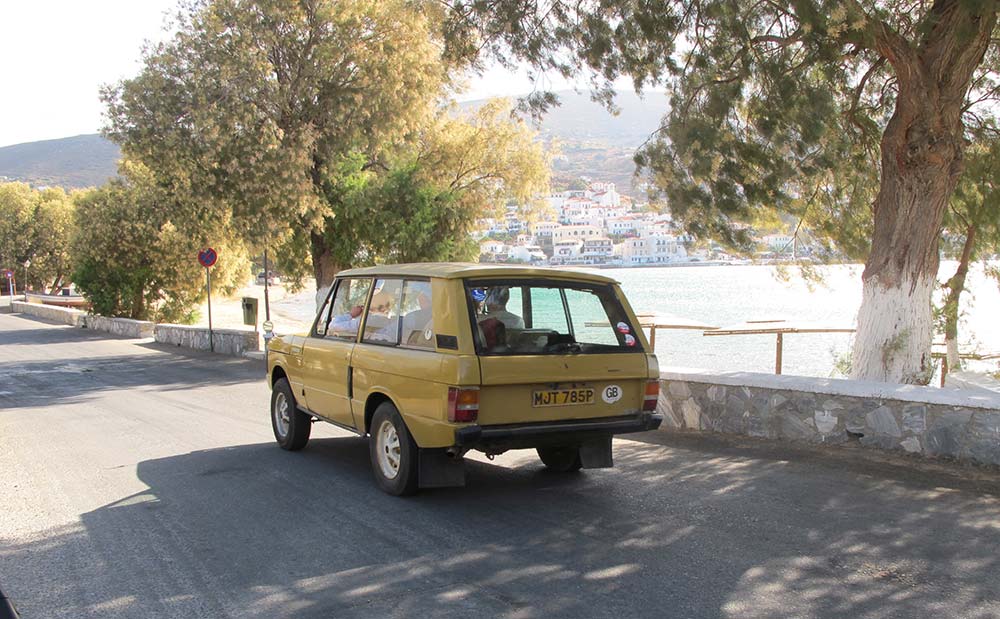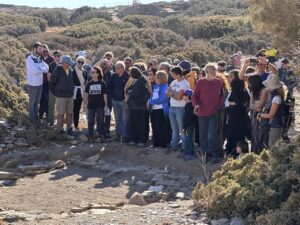by Paul Donnelly
Powerhouse Museum Curator, Design and Society
and Archaeologist
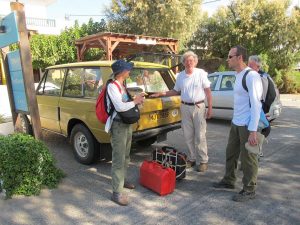
Zagora is the most recent stint for Richard who has worked all over Europe, the Mediterranean and the Near East – often accompanied by his 1972 Range Rover whose body itself resembles an archaeological dig of his past 40 years! Bought new in Jersey (Channel Islands) in 1972 in fashionable ‘Bahama Gold’ colour (it still sounds more exotic than the ‘English mustard’ it resembles) the P-suffix numberplate shows it was re-registered in 1975 in the United Kingdom making it seem younger than it is. This is the first archaeological layer as it demonstrates the truism that it pays to be suspicious of all clues in archaeology – even those seemingly as watertight as a stated date!
Soon after taking delivery of the car in 1972 Richard drove it to Cyprus – and then Syria in the same year. Prior to the wide availability of drive-on ferries the Range Rover had to be precariously craned onto relatively small boats (lighters) and then transferred to a larger ship to navigate between the substantial watery bits (that is sea) dividing those countries! In Cyprus the Range Rover assisted in the movement of people and equipment at the site of Kourion. Here one of the car’s more unusual duties was the carrying on its roof of a portable corrugated iron toilet that was no longer needed at another site but could be used at Kourion. Fortunately for the survival of the paintwork a bed mattress prevented damage.
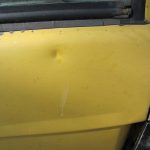
Many years later (1998-2003) the Range Rover again took Richard to Syria for the archaeological excavations at Al Andarin run by Oxford University where the car performed duties as a ‘troop’ carrier ferrying archaeologists as well as less predicably, retrieving lost kites . . . In addition to Richard’s professional skills he has accumulated the ability to make and use kites for the aerial photography of archaeological sites. This is a delicate operation with many thousands of dollars of camera equipment literally hanging in the balance. Occasionally the wind became unexpectedly strong and broke the string (thankfully without the cameras attached) and Richard had to give chase to retrieve his lost kite.

Returning to Greece from Syria through Turkey in the early 2000s saw a scrape with a guard rail near Ankara on the driver’s side front, and the rear nearside pillar is dimpled from being beaten back into shape by Richard after reversing into a low olive tree branch at Sparta in Greece in the 1990s.
Even by 1985 Richard had felt the car was battered enough not to respond to the honesty of a note left by a driver who had reversed into the driver’s door in Winchester, England.
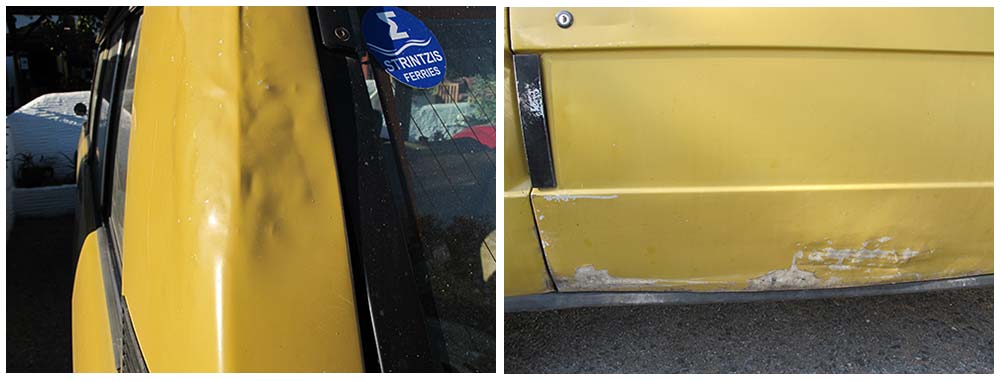
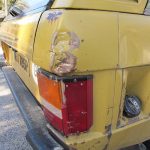
Not all panels have survived to tell the tale. The passenger side front and rear panels were wrecked by a truck cutting the corner on a winding mountain road in Italy in 2002 and Richard is up to his second tailgate and third bonnet which are parts of the car susceptible to rust (unlike many of the other Range Rover panels which are made of aluminium).
The most recent ‘level’ of Richard’s archaeological car is a dent above a rear light due to a close encounter with a concrete pillar in a tight spot at a hotel at Briançon in the French Alps. Truly a ‘dig on wheels’ or ‘monument’ documenting the varied experiences of a well-travelled archaeologist!
The 1970 Range Rover
Richard’s long experience with his beloved ‘work-horse’ is testimony to the ground-breaking design of the Range Rover. Introduced in 1970, the Range Rover was Britain’s answer to the (then new niche market) of Sports Utility Vehicle (SUV) developing in the United States through models such as the International Harvester Scout and Ford Bronco. Rover however had already been experimenting from the 1950s with just such vehicles but it wasn’t until the 1960s that the ‘100 inch station wagon’ was devised and eventually developed into the Ranger Rover. The new Range Rover met with immediate appeal and saw demand outstripping supply for much of the 1970s – the Solihull (Birmingham) factory just couldn’t keep up with demand. Despite early teething troubles the Range Rover is the ideal example to demonstrate that the much-maligned 1970s British motor industry could actually do something brilliantly! Its stylish exterior and vast panoramic windows mixed with rugged ‘can-do’ chunkiness made it the darling of the British landed-gentry, helped no doubt by photographs of Queen Elizabeth II in both the passenger and drivers seats: money can’t buy such advertising! Underneath the style and class however, was a true all-terrain vehicle that, thanks to excellent gear ratios and free-travelling suspension, was as happy in a ploughed field as it was in a rough Syrian desert. Without doubt the Range Rover was a major step in the development of four-wheel-drive designed to appeal to a rural and urban market – one of the earliest and most capable SUVs made when it was important that style matched, and not outweighed, ability.
Wikipedia has an informative article on the Range Rover Classic.
